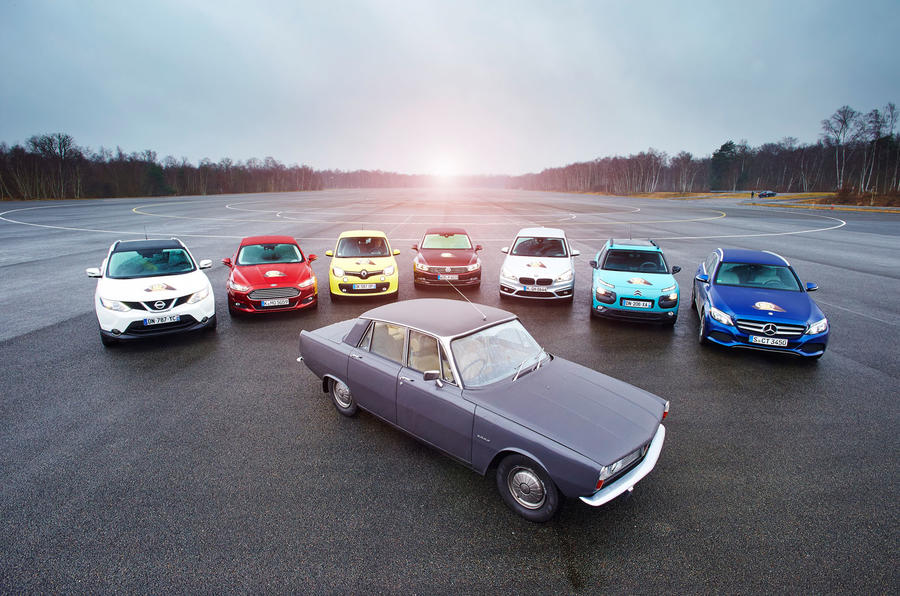Mortefontaine, just north of Paris, 17 February. It’s the annual European Car of the Year (COTY) test event, with nearly every member of the 58-strong jury, representing 22 countries, gathered at the CERAM motor industry test facility to try out this year’s seven-car ranges shortlisted for COTY 2015 and pick a winner.
This year, however, there’s an eighth model, a car that doesn’t have to beat any rivals, because it already has. It’s a Rover 2000, the first car to be crowned Car of the Year, and it has returned to demonstrate just how much has changed – and how little – since the award began in 1964.
In the 11 October 1963 issue, Autocar in its road test rated the Rover 2000 as “one of the outstanding cars of the decade”. There were many reasons for this, mostly centred around technical innovation, plentiful safety features (including four-wheel disc brakes), a feeling of quality, tenacious roadholding and a remarkable ride.
Such attributes are just as important today, although the new-century emphasis on fuel economy and emissions didn’t worry the judges so much back in 1964. Nor did panel gaps as wide as your little finger, the result of cladding a rigid base unit with entirely bolt-on skin panels.
The idea was to drive a Rover 2000 to CERAM, get several judges from several countries to make some sage observations about the state of half a century’s progress, remind myself of the attributes of this year’s crop (I, like Messrs Prior and Frankel, am among the UK’s six judges) and drive it home again. With luck, the Rover would continue to function for the full 750-mile round trip.
First, though, I needed a Rover, preferably a Series One, single-carburettor, manual-transmission version as per the 1964 winner. P6-model Rovers in this primordial form are scarce nowadays. The obvious thing would be to find a keen owners’ club member, but where’s the commitment in that? So I found myself buying one, taking the view that at least one British COTY judge should own the first winner, given that it was British.
I found it in Leyland, Lancashire, which seemed a good omen. It was bought new in April 1967 by a retired aeronautical engineer in Gerrard’s Cross, Bucks, and he sold it 15 years later to his Lancs-based nephew. Sadly, the nephew died last year, so the family, with heavy hearts, put the Rover up for sale.
It has had paint but has seemingly never been restored, nor even welded, during its 76,000 miles, and it came with an impressive stash of spares. After a few weekends’ pleasurable fettling, it was ready for its cross-Channel adventure. Via P&O ferry, of course. The tunnel would have been quite wrong for the 1960s vibe.




















































































Join the debate
Add your comment
Ride & handling
However there was still a tendency to say modern cars positives preclude the advantages that the Rover revealed. A modern engine, tyres and safety gadgets could be matched with a more advanced suspension design and comfortable seats like the Rover's and its all disc brakes only lack ABS.
So given the deterioration of Britain's roads how long before a manufacturer is brave enough to offer something like this again. I heard Peugeot are mulling the idea now they have almost completely lost their heritage.
I blame BMW
I remember it well
All the family loved it. We did 100mph on the motorway to prove it could, luxuriated in the leather interior, felt infinitely more secure than in anything else we'd ever had.
But soon the engine started to growl ominously, the wings developed holes, those disc brakes started to squeal like pigs... it didn't last long.
Still my favourite of all our family cars though. The Peugeot 406 was next, for surprisingly similar reasons. I've never experienced a ride that good since.